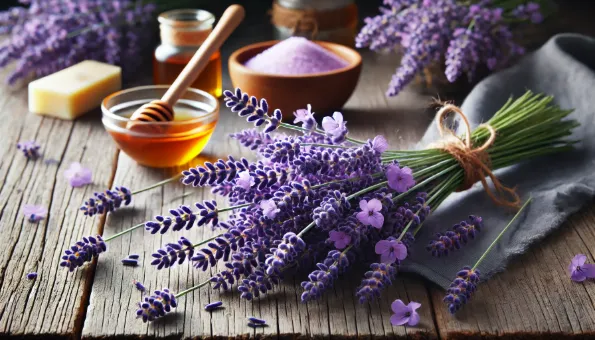Lavender: Fragrant, Edible Flower for Sweet & Savory
Culinary-grade lavender buds add floral, lemony notes to desserts, teas, syrups and herb blends—use sparingly.

What Is Culinary Lavender?
Lavender (*Lavandula angustifolia*) used for cooking comes as **dried buds** with a **floral, citrusy, slightly piney** aroma. It’s lovely in **baked goods, custards, teas**, syrups and **Herbes de Provence**.
Nutrition (per 1 tsp dried ~0.4–0.5 g)
Negligible calories and macros; contains small amounts of **polyphenols** and aromatic compounds. Primarily a **flavoring** rather than a nutrient source.
Culinary Benefits
- **Distinctive aroma** elevates simple recipes.
- Pairs well with **lemon, honey, berries, vanilla, thyme**.
- Works in **sweet and savory**: from shortbread and pannacotta to roast lamb rubs.
Possible Downsides
- **Overuse tastes soapy/medicinal**—measure carefully.
- Some people may be **sensitive/allergic** to mint-family herbs.
- Use **culinary buds**, not **essential oil** for ingestion.
- If pregnant/nursing or on medications, stick to **culinary amounts** and consult if unsure.
How to Use
- **Infuse** warm **cream/milk** for ice cream, custard or ganache; strain.
- Make **lavender syrup** (1:1 sugar:water + 1–2 tsp buds per cup); great for lemonades and cocktails.
- **Lavender sugar:** pulse buds with sugar; use in cookies and cakes.
- In **Herbes de Provence** with thyme, rosemary, savory.
- Start with **¼–½ tsp per 250 ml** of liquid or **½–1 tsp per 250 g** dough/batter; adjust to taste.
Tip
Grind lightly with sugar or salt to **disperse flavor**. Balance with **acid** (lemon) or **fat** (cream, butter) to round the perfume.
- 1. Lavender
Culinary lavender – sušeni pupoljci lavande (*Lavandula angustifolia*), citrusno–cvjetne arome s notom borovice; koristi se u slanim i slatkim jelima, čajevima i sirupima. Koristi isključivo **culinary grade** (ne dekorativnu/perfimiranu).

